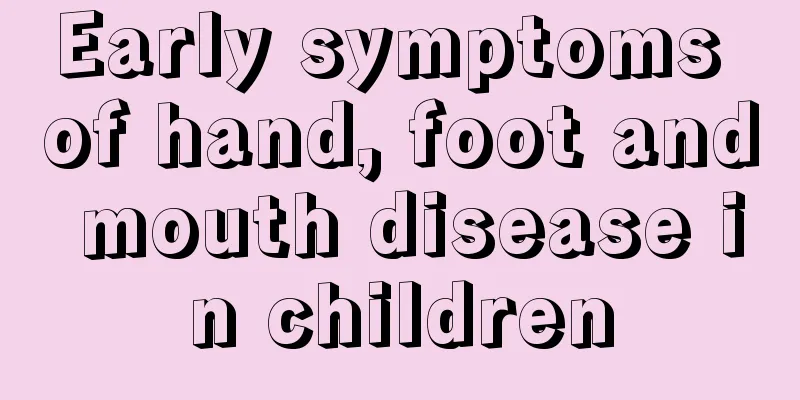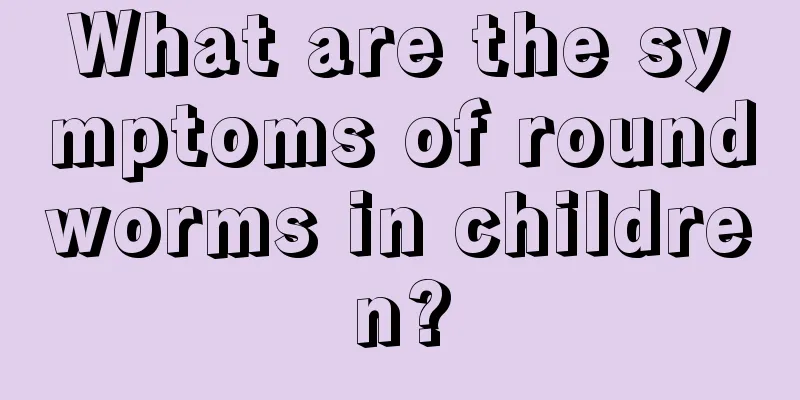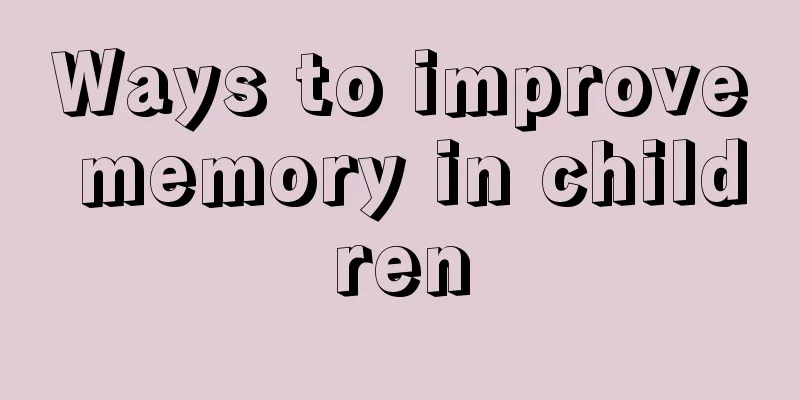Early symptoms of hand, foot and mouth disease in children

|
In real life, hand, foot and mouth disease is a relatively common disease in children, and it is highly contagious. If children do not pay attention to hygiene or have viruses in their intestines, it can easily lead to hand, foot and mouth disease. Children with hand, foot and mouth disease will initially show symptoms of physical discomfort, low fever, or abdominal pain, and chickenpox or rash may appear on the skin. Early symptoms of hand, foot and mouth disease in children 1. General symptoms (1) Acute onset, with an incubation period of 3-5 days, and prodromal symptoms such as low-grade fever, general malaise, and abdominal pain. Scattered painful, millet- to mung-bean-sized blisters appear on the oral mucosa, and maculopapules and herpes appear on the hands and feet. Initially, they are maculopapules, which later turn into herpes. They are round or oval, about 3-7 mm in size, like the size of a grain of rice, smaller than the chickenpox rash, harder in texture, with a red halo around it, and less fluid in the blisters. Dot-like or flaky erosions can be seen under the grayish-white membrane. After the rash subsides, no scars or pigmentation are left. If there is a secondary infection, the skin damage will often be aggravated. (2) In addition to the hands, feet and mouth, herpes can also be seen on the buttocks and near the anus, and occasionally on the trunk and limbs. They dry up and disappear after a few days. The rash is not itchy and painful. (3) Some children may develop generalized papules and blisters, accompanied by aseptic meningitis, encephalitis, myocarditis, etc. It may be accompanied by symptoms such as cough, runny nose, loss of appetite, nausea, vomiting, and headache. (4) Some cases only present with rash or herpetic pharyngitis. The whole course of the disease is about 5-10 days. Most cases can heal themselves with a good prognosis and no sequelae. 2. Symptoms of severe cases In a few cases (especially those under 3 years old), encephalitis, encephalomyelitis, meningitis, pulmonary edema, circulatory failure, etc. may occur. (1) Respiratory system manifestations include: shallow and difficult breathing, changes in respiratory rhythm, cyanosis of the lips, white, pink or bloody foamy fluid (sputum) in the mouth, and sputum sounds or moist rales in the lungs. (2) Neurological manifestations include poor spirits, drowsiness, headache, vomiting, easy fright, limb tremors, weakness or paralysis; physical examination may reveal meningeal irritation and weakened or absent tendon reflexes; critical cases may manifest as frequent convulsions, coma, cerebral edema, and brain herniation. (3) Circulatory system symptoms include: pale complexion, increased or decreased heart rate, shallow, rapid, weakened or even absent pulse, cold limbs, cyanosis of fingers and toes, and increased or decreased blood pressure. How is hand, foot and mouth disease transmitted? 1. Communication method Hand, foot and mouth disease is transmitted in various ways, mainly through close contact between people. The virus can be transmitted indirectly through hands, towels, handkerchiefs, tooth cups, toys, eating utensils, milk utensils, bedding, underwear, etc. contaminated with saliva, herpes fluid, feces, etc.; the virus in the patient's throat secretions and saliva can be transmitted through droplets; if it comes into contact with water sources contaminated by the virus, it can also be infected through water; cross-infection in outpatient clinics and unqualified disinfection of oral instruments are also one of the causes of transmission. 2. Susceptible population People are generally susceptible to the enterovirus that causes hand, foot and mouth disease and can gain immunity after infection. Since antibodies after infection with different pathogens lack cross-protection, people can be repeatedly infected and most adults have acquired corresponding antibodies through latent infection. Therefore, patients with hand, foot and mouth disease are mainly preschool children, especially in the age group of ≤3 years old, with the highest incidence rate. According to foreign literature reports, the disease may become prevalent among the population every 2-3 years. 3. Popular methods Hand, foot and mouth disease is extremely widespread and has no strict regional distribution. The disease can occur in all seasons, but is more common in spring and summer and less common in winter. During the hand, foot and mouth disease epidemic, kindergartens and nurseries are prone to collective infection. This type of disease clustering also occurs in families. Cross-infection in hospital outpatient clinics and lax disinfection of oral instruments can also cause transmission. The disease is highly contagious, has complex transmission routes, high epidemic intensity, and spreads quickly, and can cause a pandemic in a short period of time. |
<<: The child snores and has phlegm when sleeping
>>: What is the reason for frequent urination in little boys?
Recommend
What are the methods to treat children's hunchback?
Children are the flowers of the motherland. Every...
What are the early symptoms of brain tumor in babies?
With the development of medical technology, the p...
How to care for children with excessive drooling
Many people have drooling. People who often drool...
Diagnosis of hydrocele in children
The diagnosis method of hydrocele in children is ...
What should I do if my eight-month-old baby has high lead levels?
For those who frequently undergo physical examina...
Reasons why children blink frequently
Children's physical health is an issue that f...
What to do if your child has too much body hair
It is common for adults to have excessive body ha...
What are the treatment and prevention methods for children's night terrors?
Some babies often have night terrors when they ar...
Is benign epilepsy more common in children?
Pediatric epilepsy is usually called benign child...
Why bacterial pneumonia in children
Bacterial pneumonia in children is a relatively c...
What is the cause of thrombocytopenia in babies?
Platelets play an indispensable role in our human...
Why do children’s hands shake when writing?
Primary school students will encounter a lot of t...
Is it good for children to eat pecans?
Pecan is a kind of American pecan fruit, also kno...
What medicine should I use for ringworm on my child's face?
When a skin condition such as ringworm occurs in ...
What is the development standard of an eight-month-old baby?
Everyone knows that children develop very quickly...









